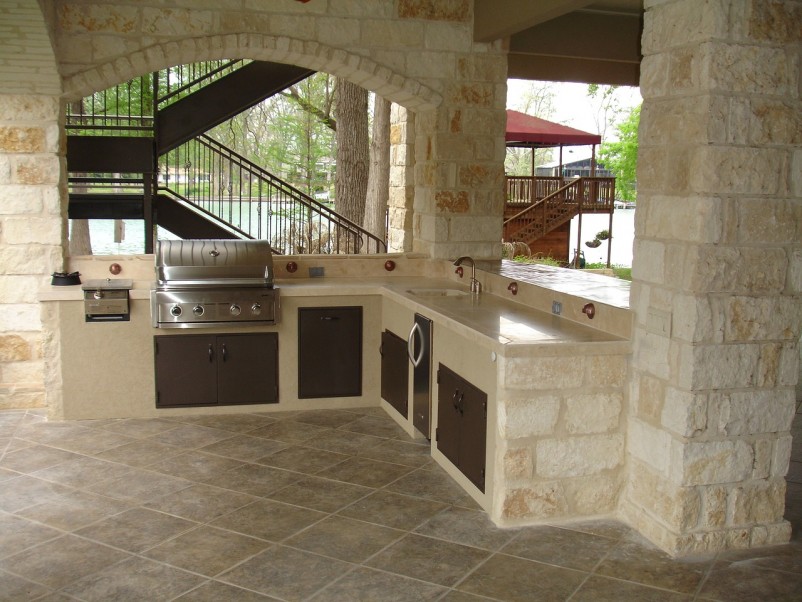
Outdoor kitchens are on the rise. According to Grand View Research, the global market for outdoor kitchens was valued at $19.64 billion in 2021 and is expected to grow at a compound annual growth rate (CAGR) of 8.3% from 2022 to 2030, reaching an estimated $40.32 billion by 2030.
Clearly, more and more people are getting interested in outdoor kitchens. They can be a great way to raise the value of your home and entertain guests outside. But designing them can be a challenge.
So here are nine outdoor kitchen design tips:
1. Set a budget
It's no use planning an outdoor kitchen without a budget. You need to know how much you can afford to spend before deciding what materials and appliances to get.
So set a budget early to limit your options. Costs will vary for materials, appliances, labor, design, permits, tools, and add-ons. Ask for quotes before the work begins.
2. Assess your available space
The amount of space in your backyard can affect what type of outdoor kitchen you build. Little space may limit your options. A large space may expand them, though you don't want to have to walk too far from the house to get to the outdoor kitchen.
Start by measuring your yard space and consider what appliances, counter space, and furniture would fit.
3. Choose an outdoor kitchen style
Outdoor kitchens come in many different styles. Do some online research to get a taste of what types of designs are out there. You may prefer a minimal setup. Or you may want a more elaborate, fully-functional kitchen. It's up to you.
4. Choose between permanent and portable options
How long you plan to stay in your house can also impact the type of outdoor kitchen you build. For example, portable appliances may be a better option if you're renting or planning to move at some point.
However, if you are pretty settled and don't plan to move, more permanent appliances and fixtures may be the way to go. They'll just take more time to plan and build.
5. Understand your outdoor kitchen's purpose
Consider how you will use your outdoor kitchen. Do you intend to use it to entertain guests, cook for family, or both? How big is your household? And what types of foods do you like to eat?
The answers to these questions will help narrow down the types of stoves, ovens, and other appliances you'll want to include. Be realistic so that you don't end up over- or underdoing it.
6. Consider the climate and environment
The local climate may change the type of outdoor kitchen you want (or whether you want one at all). For example, if you live in Seattle and it rains a lot, you may want to build a cover. The same goes for warm climates - you may want to build a cover for shade.
Within your backyard, try to choose an area for the outdoor kitchen that gets minimal wind so you don't have to worry as much about it interfering with cooking and eating.
7. Understand maintenance requirements
An outdoor kitchen will require regular upkeep. Just like indoor kitchens, they need cleaning-sometimes even more cleaning when you consider how dirty grills and flat-top stoves can get.
So be sure to factor in all the time and money it will take to maintain an outdoor kitchen.
8. Select outdoor kitchen materials
At some point, you'll need to choose building materials for your outdoor kitchen. These could include brick, concrete, stucco, metal, tile, and more.
The key to choosing the right building materials is to strike a balance between price, durability, and attractiveness. The higher the material quality, the more expensive, durable, and attractive it will usually be.
Whatever you do, use materials that can at least resist the elements since the kitchen will be outside, after all.
9. Select appliances
Lastly, choose between various outdoor kitchen appliances. These include grills, ovens, fridges, sinks, ice makers, side burners, and much more.
Choose whatever appliances suit the needs and wants of your household.
At the end of the day, outdoor kitchen design is a personal matter. Once you become acquainted with your options, it's up to you to settle on a design that makes sense.

 Share on Facebook
Share on Facebook





















